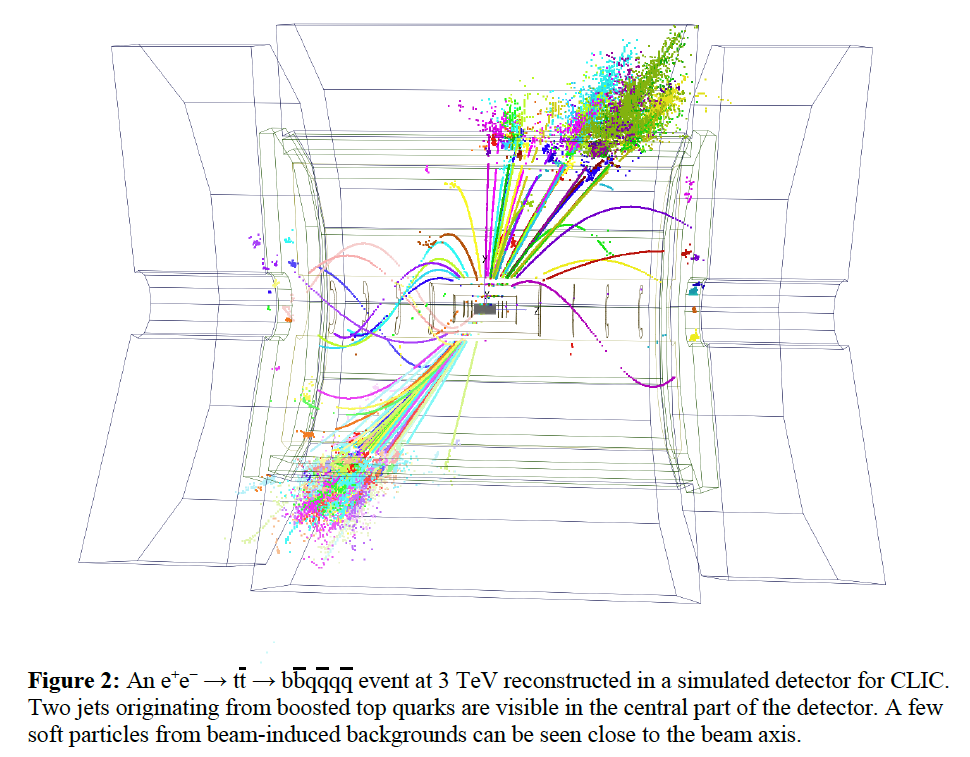Toward top physics in electron-positron collisions
The heaviest known elementary particle, the top quark, has not been studied in electron-positron collisions so far. A possible future collider such as the ILC, CLIC or FCC-ee would enable a unique top physics program far beyond the capabilities of the HL-LHC. About 60 experts met at CERN from June 7 till 9 to discuss the progress in this area [1]. Previous workshops on top physics at lepton colliders were held in Paris, Valencia and Tsukuba.

One of the key ingredients of the top physics program at an electron-positron collider is the determination of the top quark mass from a threshold scan. Here the top quark pair production cross section is measured at several centre-of-mass energy points near two times the top quark mass. This technique allows to extract the top quark mass in a theoretically well-defined manner with much higher precision than possible at hadron colliders. Hence a threshold scan is foreseen for all electron-positron collider options represented at the workshop. Another related approach to extract the top quark mass uses events with a top quark pair and an ISR photon, determining the top quark mass from the photon energy distribution.
Several presentations addressed recent developments in theoretical calculations at electron-positron colliders. New calculations of higher-order QCD and QED corrections to the top quark pair production process were discussed. In the threshold region near 350 GeV, the so-called nonrelativistic QCD approach is valid. Procedures to match calculations at threshold to the continuum at higher energies have been developed recently and are now implemented in Monte Carlo event generators. These matching procedures turn out to be relevant for physics simulation studies assuming energies somewhat above the top quark pair production threshold as currently investigated for CLIC and FCC-ee.
The capabilities of various future collider options to measure the electroweak couplings of the top quark to the Z boson and the photon have gained more and more attention in the last few years. Deviations of these couplings from their Standard Model expectations are sensitive to new physics scenarios such as compositeness and extra dimensions. Several new studies illustrating the sensitivity of top quark pair production at different centre-of-mass energies using Effective Field Theory (EFT) were presented. The effect of a subset of EFT operator coefficients on the cross section is almost independent of the centre-of-mass energy. These operator coefficients are best probed not too far from the maximum of the cross section at 420 GeV. The sensitivity rises steeply with energy for other operator coefficients. For this reason, an electron-positron collider operated at several centre-of-mass energies can maximise the overall new physics reach in this area.
Another physics opportunity for an electron-positron collider are flavour-changing neutral current (FCNC) top quark decays. As the branching ratios predicted in the Standard Model are far too small to be observable, an observation of such a decay would be an indirect hint for new physics. Decays with charm quarks in the final state, such as t→cH, are especially interesting for electron-positron colliders due to the excellent flavour tagging capabilities of the considered detector concepts.

A dedicated session was devoted to reconstruction issues investigated using full detector simulations. Hadronic decays of boosted top quarks produced in high-energy CLIC operation above 1 TeV do not lead to three well-separated jets (see Figure 2). Instead, techniques developed for the LHC in recent years can be adapted, where the top quark is reconstructed as a relatively large jet. The top quark can be identified by parsing and investigating the substructure of this large jet.
The clean experimental environment at an electron-positron collider allows to measure the charge of b-quark jets. This can improve the reconstruction of top quark pair events and would allow to measure the electroweak couplings of b-quarks also when operating an electron-positron collider below the top quark pair production threshold. For example, the expected precisions achievable at an initial ILC stage at 250 GeV would already exceed the LEP results significantly.
After three days of very fruitful exchange, the workshop concluded with a discussion of open issues and ideas for further studies. The next event in the series will be held in 2018 at Tohoku University in Japan.
References: [1] Webpage of the workshop: https://indico.cern.ch/event/595651/
